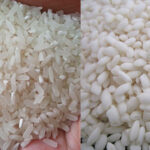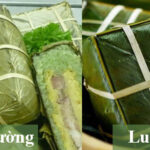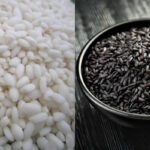1 – Tips for Boiling Banh Chung to Make it Green, Sticky, and Tastier
Rinse the sticky rice thoroughly
The first step to achieving perfect Banh Chung is to rinse the sticky rice multiple times until the water runs clear. This process ensures that any dust or bran sticking to the rice grains is washed away, resulting in a cleaner and less sour taste.
Soak the rice with lye water
Lye water has a mild alkaline property, and some families in Central Vietnam use it to soak the sticky rice before cooking. This increases the alkalinity of the rice, resulting in a more transparent texture and a beautiful emerald green color while retaining the delicious flavor of Banh Chung.
Soak the rice with smashed ginger or pandan leaves
Smash and mix ginger with the sticky rice before wrapping the Banh Chung. This will give the cake a uniform green color, from the shell to the filling, and a unique fragrance. Similarly, clean and smash pandan leaves, squeeze out the juice, and soak the rice for 1-3 hours to achieve an attractive green color.
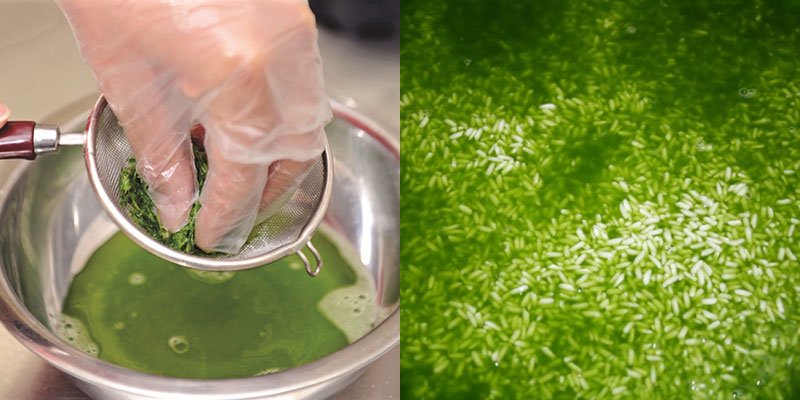
In addition to the above methods, you can also squeeze lemon juice directly onto the sticky rice. Lemon has a strong alkaline property that will help the rice cook faster and result in more appealing colors.
Clean and blanch dong leaves
Dong leaves must be cleaned individually and thoroughly, then dried with a clean cloth. Before wrapping the cakes, the leaves should be blanched in boiling water to eliminate any mold spores. The number of leaves used for each cake depends on the weather: use six leaves in cool weather and ten leaves in hot weather for better preservation.
2 – How to Boil Banh Chung to Make it Sticky and Tasty
A tole pot is recommended for cooking Banh Chung as it creates an alkaline environment. This type of pot helps retain the green color of the dong leaves, resulting in a more natural-looking Banh Chung.
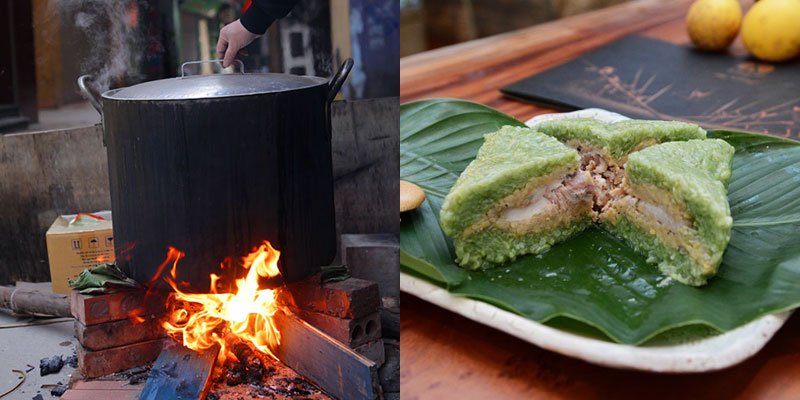
When cooking, place spare leaves at the bottom and around the inner walls of the pot to prevent the cakes from burning. These leaves also contribute to making the cooking water greener.
After boiling halfway through the usual time, remove the cakes, rinse them with cold water, change the water in the pot, and continue cooking. This process will result in greener, more tender, and tastier Banh Chung.
For Banh Chung, there is an additional step of pressing out the water after cooking. In contrast, for Banh Tet, rinse the cakes with cold water after removing them from the pot and then roll them by hand to shape them evenly. Good luck with making this delicious Banh Chung for your family’s reunion on Tet holiday!
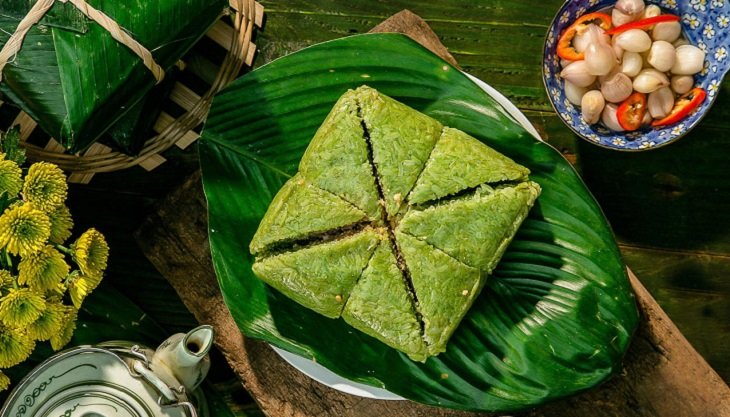
According to Khoevadep
The Secret to Perfectly Fluffy Rice
Xoi, a traditional Vietnamese dish, is not only a staple at family gatherings and ceremonies but also a nutritious breakfast option to start the day. The secret to a perfect pot of xoi lies in the meticulous selection of rice and a unique cooking technique that transforms this simple dish into a flavorful masterpiece.
Why You Should Avoid Eating Sticky Rice Dishes When You Have a Wound.
Sticky rice is a familiar food, packed with nutrients and good for your health. It is commonly used to make sticky rice cakes, steamed sticky rice cakes, or sticky rice. However, for those with open wounds, consuming sticky rice is absolutely not recommended. The reasons for this will be explained further in this article.

























